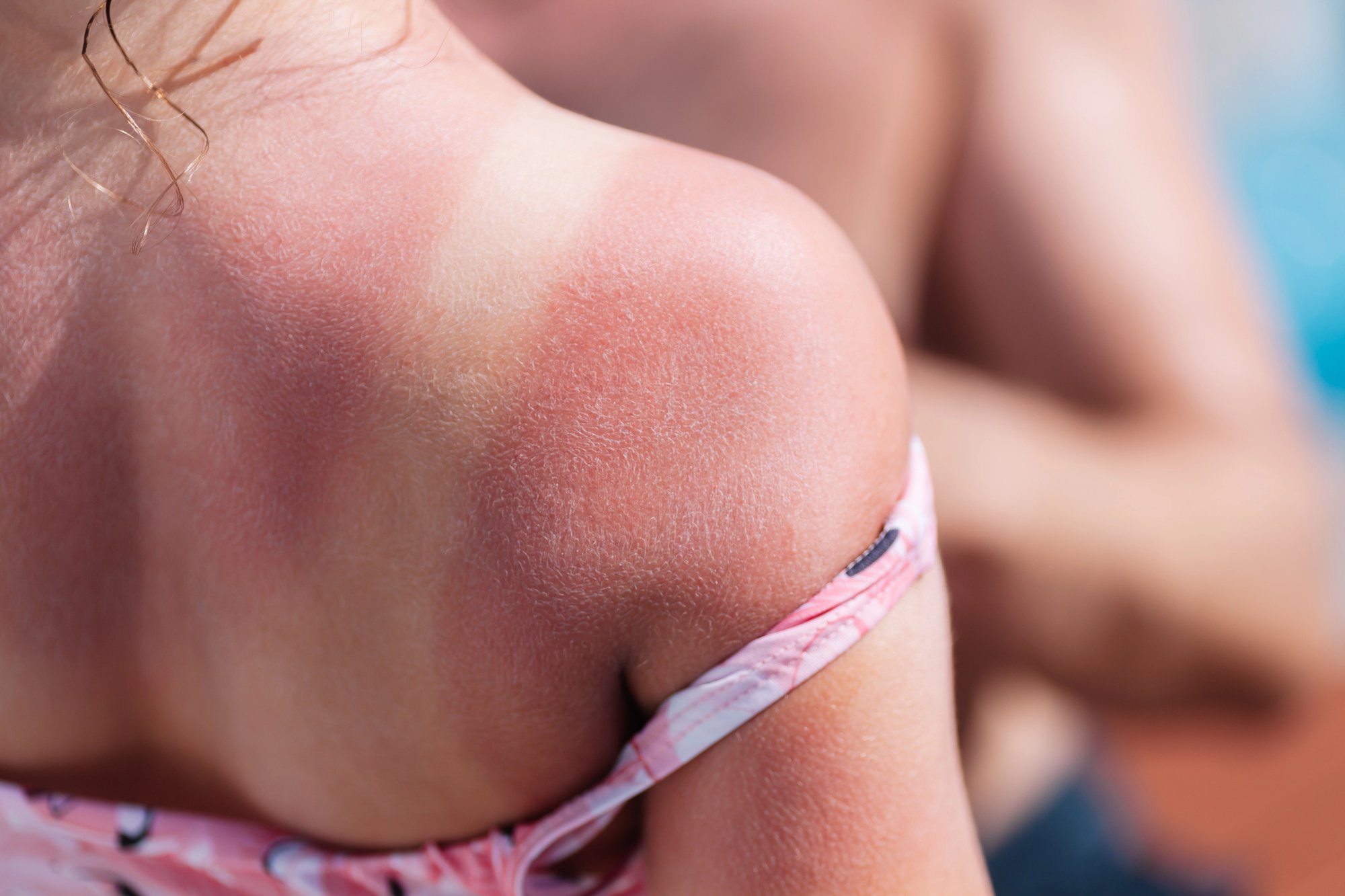When you go on holiday, you get to enjoy the sun and go swimming, depending on where you go, but many wonder whether your skin can tan through water. Keep on reading to find out what happens to your skin, when swimming, and find out if you can tan through water, or is it a myth?

How The Natural Sun Tanning Process Works
When sunlight reaches your skin, its ultraviolet (UV) rays trigger a defense response in your body, where your skin cells produce more “melanin”.
Melanin is the pigment that darkens your complexion, and it absorbs some of the UV radiation from the suns’ rays.
Seeing a “tan” on your skin, is a build-up of melanin, and it’s the skin’s attempt to limit DNA damage within its cells.
When it comes to the sun’s rays, the UVB rays are mainly what causes direct DNA damage and sunburn, whilst the UVA rays penetrate deeper within the skin, causing premature aging – but both can contribute to skin cancer.
As the UV rays hit your skin, specialized skin cells called “melanocytes” ramp up the melanin production, and distribute the “tanned” pigment to surrounding cells.
We don’t tan instantly, when in the sun. To start with, skin might look a little red with gradual darkening over 24 to 72 hours, as the melanin increases and oxidizes within the skin.
Can You Tan Through Water?
In a nutshell – yes you can, but not as much as direct air expousre.
Water doesn’t block all UV rays, with water actually filtering the rays and scattering it. Allowing your skin to get enough UVA/UVB rays to trigger melanin production, and the gradual skin darkening, we know as tanning.
The intensity of tanning drops, depending on the depth of the water and also the clarity. The deeper the water (like the ocean), fewer tanning rays will reach the skin.
Whilst clearer and more shallow water lets more UV through the water, plus ripples or waves in the water, can also affect how the rays hit your skin.
Why You Can Still Burn Even When You Are Underwater
The water doesn’t provide you any protection from the sun’s damaging rays.
As I mentioned above, ultraviolet radiation or “UV” penetrates water easily, so the rays reach your skin as effectively as they do in open air.
You are also exposed to sun rays in multiple directions, as water scatters and reflects off the pool floor, sand or rocks, increasing the total UV your skin absorbs, unless you’re in deep water, like the ocean.
Perception is another issue, as we all feel cooler, when in water, so you don’t necessarily notice your skin heating up or stinging, like you do on land, so you might end up staying in water for longer.
I know that personally, my worst sunburn occasions have always revolved around water, being in the sea or pool, so I’m always super careful, as I definitely burn a lot quicker in water, than I do on land.

Sunscreen Behavior While You Are in the Pool or Ocean
You obviously cannot apply your suncream in the morning, and assume your skin is protected all day long. Even the sun protection products that claim to be an “all day” protection kind of product – you still need to reapply, to ensure you’re fully protected.
It is best to go for a broad-spectrum and water-resistant SPF, with SPF30 or higher, at least 15 minutes before entering water, so it fully absorbs for maximum protection. You don’t want it to just wash off the second you jump in the pool.
Water-resistant SPF usually gives you 40 to 80 minutes of protection at most, so you need to reapply your SPF every two hours at minium, and whenever you use a towel, as the friction removes your suncream.
Because UV rays reach you so effectively in the water, what you do with sunscreen there matters a lot. You can’t just slap it on once and assume you’re covered all day. Apply a broad‑spectrum, water‑resistant SPF 30 or higher at least 15 minutes before getting in. That time lets the product bind properly so it doesn’t rinse off immediately.
